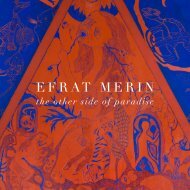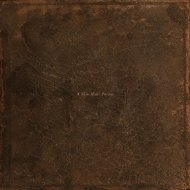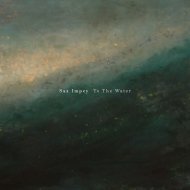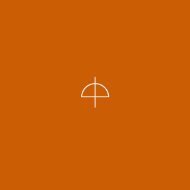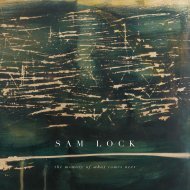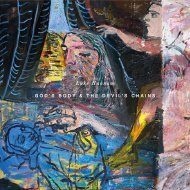Judith Nangala Crispin 'Ascending Beings'
Fully illustrated publication for the solo exhibition 'Ascending Beings' by Judith Nangala Crispin at Anima Mundi Gallery, St Ives
Fully illustrated publication for the solo exhibition 'Ascending Beings' by Judith Nangala Crispin at Anima Mundi Gallery, St Ives
Create successful ePaper yourself
Turn your PDF publications into a flip-book with our unique Google optimized e-Paper software.
<strong>Judith</strong> Nanagala <strong>Crispin</strong><br />
Ascending Beings
“...How can I speak to Country in a language it can’t understand...”<br />
1
“I have no memory of waking. An awareness slowly formed in the dark — scratching<br />
acacia, the strum of powerlines in wind. There had been a voice.<br />
I throw open the bedroom window, admit the calligraphic night. Saturn and Mars are<br />
spiders on the edge of black. The Milky Way, a curving string. Somewhere beyond sight,<br />
Cassini is dropping through Saturn’s rings like a jewel.<br />
<strong>Judith</strong>.<br />
Wake up.<br />
I surface outside, the way someone drowning strikes upward toward a lit line of air. My<br />
feet sink in lawn, breeze tugs at my pyjamas.<br />
Something is wrong with the sky.<br />
Behind the house, black cypress pines should lift the mountain’s shoulder, in starwort<br />
and bitter pea, until fire trails tumble the leeslope down to the airforce base below. But<br />
tonight’s sky does not disapear behind the mountain. Stars fall to a flat line, a plataeu,<br />
spinifex grasslands thinning to clay. Wind-thrashed salt lakes, opaline as cataracts on the<br />
desert’s eye. And horizon to horizon, low ridges snake out like lines in the Martian dust.<br />
Along the skysill, mares’ tail clouds distort the constellations. Stars appear and vanish<br />
over sleeping creeks. A handspan in front of my face, the air is displaced. An owlet<br />
nightjar drops in blackness, open-beaked and quickened in the bones that hold her. She<br />
hisses and is gone — a flung shadow on the gulf of Magellan’s aerial lakes.<br />
And I saw them then, low on the starfields — a night mirage. A noctilucent shape,<br />
dividing itself into figures. I count five, immense and dingo-headed, striding out in the<br />
direction of deserts. Purposeful as thunderheads, their bodies are wild and dark. Starry.<br />
They camouflage themselves against night’s shifting hollows. Constellations rise and set<br />
in their organs. Their arteries are zodiacal light. A satellite circles a thigh. And always<br />
2
And always their anatomy morphs and shifts — sparking cells become galaxies become<br />
electricity, branching out into the sky like lightning.<br />
A caravan of star mongrels walk a horizon that can’t exist. They vanish in cloud,<br />
reappear against the brightest falls of stars. A dream. A vision so strong the world<br />
breaks beside it.<br />
I want to call out — but the half-formed word catches in my throat like a burr. How<br />
can I speak to Country in a language it can’t understand? In the tongue of slave<br />
ships, in this murderous tongue. After all these years, the miracle arrives on my front<br />
lawn, all burning hair electric, and finds me voiceless.<br />
The vision is fading. Dawn returns the mountain, this yard with its hills hoist and<br />
mimosa. The caravan passes west with the first fingers of sun. They’ll be gone in<br />
seconds. In the last breath before waking, I saw one turn back its canine head, like<br />
acknowledgement.<br />
It is morning. The dog sleeps on his snowman and yeti print blanket. Pedalling his<br />
legs, he chases dream brumbies. On the water tank, pied butcherbirds lift up their<br />
voices, gifting this fledgling day their cascading brilliance. Soon the daily news<br />
cycle, the ordinary pressures of email and work. But something is different. I am<br />
different.<br />
Because I know they are out there, somewhere in the north-west. They will trigger<br />
floodlights in the mines and joint military facilities. They will withdraw, following<br />
starlines until the vanishing of roads. Where shale gives rise to bloodwoods, the great<br />
sentinels of desert. Starswarm of leaves and torsos thrumming with owls.<br />
They withdraw to older places — speargrass and comets. The cordon will not hold.<br />
Bombing ranges tattoo strange geometries on the heat-fused clay. In the empty<br />
communities, nightjars surrender their hymns– in a time of weapons and of wind, in<br />
the last age of dingoes.”<br />
3
These works are the result of a genuine<br />
collaboration with the landscape. They<br />
are literally constructed from light,<br />
earth and flesh. I love this technique<br />
of lumachrome glass printing for its<br />
ability to make dead animals and birds<br />
seem alive again. It is light alone that<br />
manifests these colours and shapes<br />
- not paint or anything that can be<br />
completely controlled.<br />
I have largely invented this process,<br />
which involves arranging clay, sticks,<br />
leaves, seeds, resin, ochres, etc, with<br />
road-killed animals or birds, on lightsensitised<br />
paper. Exposed 24 to 36 hours,<br />
while the sun arches east to west, fibre<br />
papers produce surprising arrays of<br />
colour. Over this I layer cliche-verre<br />
plates coated with resists of wax or paint,<br />
scratched with wire to create lines.<br />
Sometimes I run electric currents over<br />
these plates to produce crystals in the<br />
ochre. For finer detail, I use chemigram<br />
variants, painting compounds like<br />
selenium or copper chloride directly<br />
onto feathers, scales or fur. I have called<br />
this Lumachrome glass printing because<br />
light produces colours in the emulsion<br />
(Lumachrome) and I use layered<br />
glass plates. The resultant enduring<br />
works are created from ephemeral images,<br />
continually decomposing, simultaneously<br />
exposing in light. I render them in archival<br />
pigments on paper, hand annotating them<br />
with gold/silver leaf, charcoal, graphite<br />
and other markers.<br />
My process is different, adaptive, for<br />
each print. If an animal is still bleeding,<br />
I paint this into the image during<br />
exposure. Ochres, seeds, sticks, and other<br />
materials, are sourced where the animal<br />
or bird was found. If maggots and flies<br />
appear, their tracks are incorporated into<br />
the work. When the print is complete, the<br />
creatures are respectfully buried.<br />
This approach has arisen from my efforts to<br />
reconnect with Country and culture, after<br />
decades of tracing my family’s Indigenous<br />
roots. I am always trying to create a<br />
dialogue with land through my images<br />
and poems—by raising up the smallest of<br />
fallen creatures and bearing witness to<br />
their passing.<br />
<strong>Judith</strong> Nanagala <strong>Crispin</strong>, 2024<br />
4
5
6
On a night of meteor showers and lit uranium mines, Jeremy,<br />
released from his chickenhawk body by a passing truck, unfolds<br />
his thousand-eyed wings<br />
Single edition archival pigment on Canson Baryta Photographique<br />
II Matt paper, hand detailed with gold/silver leaf, graphite and<br />
charcoal, from a Lumachrome glass print, cliche-verre, chemigram,<br />
drawing. Roadkilled chickenhawk, sand, vegemite, household and<br />
decomposition chemicals, rodinal, graphite, biro, bromide, wax, and<br />
marbles on Fomapan fibre paper. Exposed 47 hours in rainlight in a<br />
geodesic dome<br />
113 x 180 cm<br />
7
Martin dreams a barn owl into being, over Mt Jillamatong, on a<br />
night of flying saucers and stars<br />
Single edition archival pigment on Canson Baryta Photographique<br />
II Matt paper, hand detailed with gold/silver leaf, graphite and<br />
charcoal, from a Lumachrome glass print, chemigram, cliche-verre<br />
and drawing. Road-killed Eastern Barn Owl, sand, graphite, wax and<br />
ink on fibre paper. Exposed 32 hours in a geodesic dome<br />
172 x 144 cm<br />
8
9
10
Her wing caught on a barbed wire fence, night becoming day and<br />
the bone pierced. Ruth slips off her owl body, exploding into the<br />
sky over Lake Burley Griffin, to become a sun<br />
Single edition archival pigment on Canson Baryta Photographique II<br />
Matt paper, hand detailed with gold/silver leaf, graphite and charcoal,<br />
from a Lumachrome Glass Print, Cliche-Verre, Chemigram and<br />
drawing. Trapped deceased Eastern Barn Owl, seeds, feather-top grass,<br />
turmeric, coffee, liquid paper, sulphuric acid and silver chlorides,<br />
exposed 40 hours with electric current, in a geodesic dome<br />
132 x 180 cm<br />
11
At season’s end, fireflies fill the ribbon barks, down by<br />
Shoalhaven river. Sunny, lost to traffic, waits all night for dawn,<br />
for waking fireflies, and weaves a new body from their glow<br />
Single edition archival pigment on Canson Baryta Photographique II<br />
Matt paper, hand detailed with gold/silver leaf, graphite and charcoal,<br />
from a Lumachrome Glass Print, Cliche-verre, Chemigram, drawing.<br />
Road-killed juvenile hare, twigs, marbles, wax, ochre and seeds on<br />
fibre paper, exposed 46 hours in a geodesic dome<br />
100 x 178 cm<br />
12
13
14
Vincent rises in the stratosphere, over night-cities, on a line of<br />
zodiacal light - last astronaut of the Rex Hares<br />
Single edition archival pigment on Canson Baryta Photographique II<br />
Matt paper, hand detailed with gold/silver leaf, graphite and charcoal,<br />
from a Lumachrome glass print, cliche-verre, chemigram and drawing.<br />
Road-killed Rex Hare, gold chloride, sand, crayon, diluted vegemite<br />
and felt on fibre paper. Exposed twice over 38 hours in a geodesic<br />
dome, with electric current<br />
169 x 121 cm<br />
15
Marcia sounds her wild freedom songs over the houses of the<br />
bigots<br />
Single edition archival pigment on Canson Baryta Photographique II<br />
Matt paper, hand detailed with gold/silver leaf, graphite and charcoal,<br />
from a Lumachrome glass print, cliche-verse, chemigram, drawing.<br />
Drowned ghost bat, ochre, mud, wax, coloured markers and sand on<br />
fibre paper. Exposed 46 hours in an abandoned car<br />
138 x 148 cm<br />
16
17
18
She remembered running, baby in pouch, the burrow nearly<br />
visible, birds lifting from the watertank at the first rifle’s crack–<br />
so cold in the long grass, day drops night, and the joey stills. In<br />
the winter sky over Braidwood, Enid finds her baby again, as a<br />
spark in starfields<br />
Single edition archival pigment on Canson Baryta Photographique<br />
II Matt paper, hand detailed with gold/silver leaf, graphite and<br />
charcoal, from a Lumachrome glass print, cliche-verre, chemigram<br />
and drawing. Shot wombat mother and her frozen joey. Exposed 49<br />
hours, with salt, sand, ochres, gold chloride, white-out and clay, on<br />
fibre paper in a geodesic dome<br />
177 x 137 cm<br />
19
Leaving his wheelchair, Emmanuel drifts over Canberra in the<br />
body of a jewelled shrike-thrush<br />
Single edition archival pigment on Canson Baryta Photographique II<br />
Matt paper, hand detailed with gold/silver leaf, graphite and charcoal,<br />
from a Lumachrome glass print, cliche-verre, chemigram. Roadkill<br />
Grey Shrike-Thrush, seeds, liquid-paper, stalks and petals on fibre<br />
paper. Exposed under marked perspex, 26 hours in rain light<br />
180 x 127 cm<br />
20
21
22
Lily returns to Altair, the brightest of Aquila’s stars, wearing the<br />
body of a crow<br />
Single edition archival pigment on Canson Baryta Photographique II<br />
Matt paper, hand detailed with gold/silver leaf, graphite and charcoal,<br />
from a Lumachrome glass print, cliche-verre. Roadkill crow, ochres<br />
& dandelion seeds on fibre paper. Exposed 32 hours in autumn light<br />
under brushed perspex<br />
180 x 142 cm<br />
23
For ascending night-flyers, the lights of Wangaratta grow<br />
increasingly smaller, until they resemble constellations, and the<br />
difference between above and below is lost. Four starlings climb<br />
into a black mirror sky, on their return trip to Zeta Reticuli, star<br />
country of intergalactic birds<br />
Single edition archival pigment on Canson Baryta Photographique II<br />
Matt paper, hand detailed with gold/silver leaf, graphite and charcoal,<br />
from a Lumachrome Glass Print, Cliche-verre, chemigram, drawing.<br />
Four window-killed starlings, seeds, sand, graphite and household<br />
chemicals on fibre paper. Exposed 46 hours in a geodesic dome<br />
84 x 179 cm<br />
24
25
Selected Biography<br />
<strong>Judith</strong> <strong>Nangala</strong> <strong>Crispin</strong> is an Australian visual artist, and award winning poet and a<br />
descendant of Bpangerang people of North East Victoria. Her skin name, <strong>Nangala</strong>, was<br />
given to her by the Warlpiri people of the remote Tanami Desert in northern Australia,<br />
a place she has lived for a few months each year for over a decade. Her work includes<br />
themes of displacement and identity loss, a reflection on her ancestry, but it is<br />
primarily centred on the concept of connection with the land. This work forms a part<br />
of <strong>Crispin</strong>’s ongoing series depicting the transcendent ascending forms of recently<br />
deceased fauna. <strong>Crispin</strong>’s camera-less method of photography incorporates a range<br />
of processes. Her own developed alternative process of ‘lumachrome glass printing’,<br />
combines elements of lumen printing, cliché verre, chemical alchemy and drawing.<br />
She works within a mobile geodesic dome which functions as a giant lens where light<br />
streams penetrate its plastic walls. The mobility of her studio allows her to go to the<br />
site of her subject, prior to respectful burial. The muse, is raised onto a plastic box,<br />
rested on special photographic paper for up to 50 hours as the passage of sun and<br />
moonlight exposes its posthumous portrait. Each work is viewed as a collaboration<br />
with nature, where honouring the subject is a key objective. In each workork the<br />
animals are diaphanous where light has literally passed through their bodies. They<br />
appear drawn in a primitive motion by a slipstream of spirit, levitating in a space of<br />
brooding luminosity that appears sentient and wholly focused on the task of enfolding<br />
each creature back into its care. The result offers a profound sense of what lies beyond.<br />
<strong>Crispin</strong> is a proud member of FNAWN (First Nations Australia Writing Network) and<br />
Oculi collective. She holds a Ph. D from the ANU and a Doctor of Arts from the<br />
University of Sydney and has published three books “Pillars of the Temple’ (Cambridge<br />
Scholars Press), ‘The Myrrh-Bearers’ (Puncher & Wattmann), and ‘The Lumen Seed’<br />
(Daylight Books). Her verse novel ‘The Dingo’s Noctuary’ was shortlisted for 2023<br />
Arles Recontres Dummy Book Prize. Her recent prizes include the 2020 Blake Prize for<br />
Poetry and the 2023 Sunshine Coast Art Prize. A representation of <strong>Judith</strong>’s work ‘At<br />
season’s end, fireflies fill the ribbon barks, down by Shoalhaven river. Sunny, lost to<br />
traffic, waits all night for dawn, for waking fireflies, and weaves a new body from their<br />
glow’, will be deposited on the Moon in 2024, as part of NASA’s Lunar Codex.
Published by Anima Mundi to coincide with ’Ascending Beings’ by <strong>Judith</strong> <strong>Nangala</strong> <strong>Crispin</strong><br />
All rights reserved. No part of this publication may be reproduced, stored in a retrieval system or transmitted in any form or<br />
by any means electronic, mechanical, photocopying, recording or otherwise without the prior permission of the publishers<br />
Credits:<br />
Page 1-3: ‘Vision 2 (from The Dingo’s Noctuary) The Mongrels’ by <strong>Judith</strong> <strong>Nangala</strong> <strong>Crispin</strong><br />
Portrait photography: Tracey Nearmy (www.traceynearmy.com)<br />
Anima Mundi . Street-an-Pol . St. Ives . Cornwall . +44 (0)1736 793121 . mail@animamundigallery.com . www.animamundigallery.com
www.animamundigallery.com




